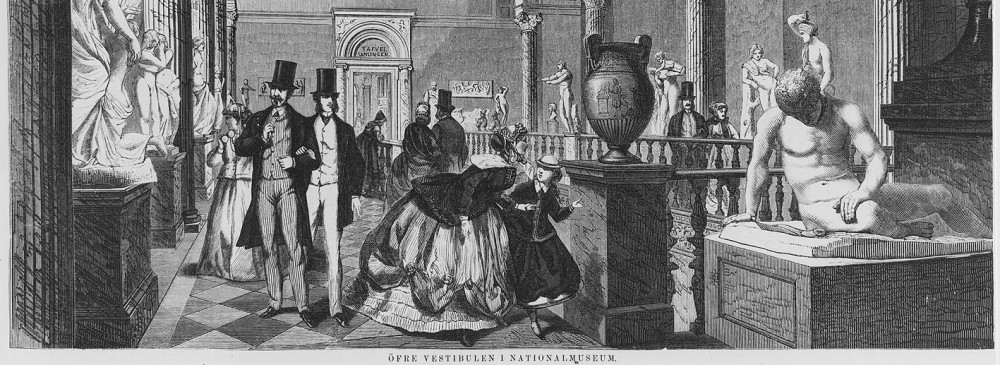Suddenly I discovered something odd and peculiar when working on the reconstruction of the 1906 display? Why are Young Boy Peeling a Pear by Édouard Manet and Talking in the Twighlight by another French painter, Lucien Simon, centrally displayed in the Gallery destined for the Swedish and Nordic schools from the same period? Of course there could be pure practical and pragmatic answer to the question due to the rather poor representation of late nineteenth century French paintings in the Nationalmuseum collection by this time. But I can ´t help wondering what kind of interpretations this presentation raised. For the scholars and connoisseurs it must have been questioned and discussed. How did it fit the art historical narrative built on nationalities and schools? But for the ordinary bourgeois audience it probably passed unnoticed. Hopefully the 3D modeling would bring some new information and guidance to understand the curatorial motives behind the gallery walls.
Monday morning news – Nodem conference in December
Exciting news; the paper for the Nodem conference, http://www.nodem.org is accepted. “Beyond Control – The Collaborative Museum and its Challenges”, is the general theme and under the title: Experience and re-experience without boundaries in time and space; the extension of a practical tool, me and my colleague, CAD designer at Nationalmuseum, will focus on the curatorial and museological aspects when using CAD. Deadline set and we have some nice job to be done in the coming couple of months. This will also be my Digitial history project; a historical reconstruction of an exhibition. An experience in itself or/and a tool for analysis? I am quite curious of the outcome.
Ready for takeoff
September 13, 2013
Kick off and here we go: the blog is born; although not at all comparative to the birth of my children I feel slightly exaggerated like you do when doing something unexpected and new. This time, the decisive moment is now, in parallel to the phd student course in Digital history at Umeå university. Digital History, have you ever heard about it? I had not. Digital humanities were familiar but until last week my ideas of Digital history was rather vague. After three days sessions I am filled with impressions and ready for takeoff.
My research blog will be about exhibition history and visual culture, but I have a special interest in exploring the possibilities of using new technology for improving visualizations of exhibition display. I am quite familiar with the CAD program as a practical tool in the exhibition planning process, but during the last couple of months I have been more curious about the museological benefits; could a CAD model also enable experience and re-experience of an exhibition without boundaries in time and space? Could a historical reconstruction in CAD or any similar program enable a better understanding of the interplay between space and narrative? Rhetorical maybe, but also part of a project I am working on together with a colleague. Since a while we slowly reconstruct an historical display. This and other related topics will be part of my blogging.
“you feel like you´re in the exhibit. It´s surreal. It´s awesome. It´s the future, an American architect this summer blogs when virtually having visited the Carl Larsson exhibition on show in Stockholm in the model he downloaded from the museums website; for me a very encouraging statement.
A great example of recent improvements in exhibition design is the Jean-Paul Gaultier exhibition, now on show at The Swedish Centre for Architecture and Design (former Museum of Architecture). Clever use of new tech and multimedia made me happy. A bit worn but highly relevant: a feast for the eye, a treat for the soul.

